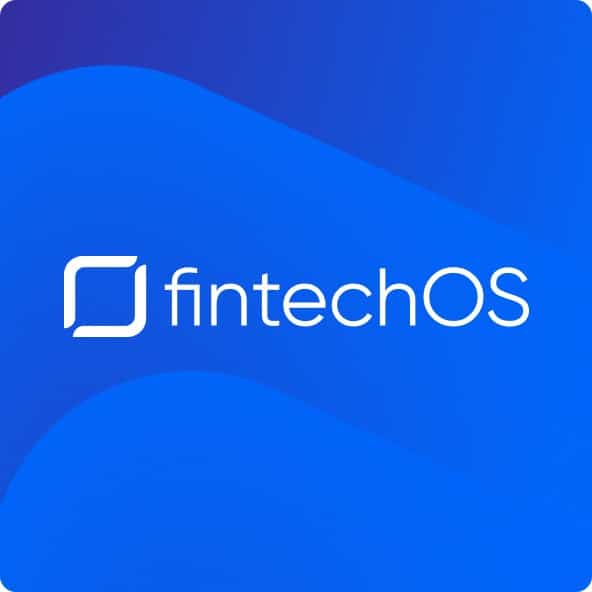Generative AI has emerged as a transformative force in the banking industry, reshaping the way financial institutions operate and interact with their customers. Unlike more traditional forms of AI, generative AI is easily accessible, quickly driving it to mainstream status.
This article dives into generative AI in banking, exploring its use cases and potential to revolutionize the financial services industry.
The Rise of Generative AI
The adoption of GAI (generative artificial intelligence) has grown exponentially in recent years. Upon release, ChatGPT reached 1 million users in just 5 days, compared to Twitter’s 2 years.
FintechOS recently surveyed 500 financial services professionals, with 41% of respondents answering that GAI is already being used within their organization today. This rapid adoption is fueled not only by its accessibility, but also due to its versatility.
While traditional AI excels at recognizing patterns and analyzing existing data, generative AI goes one step further. GAI enables individuals and businesses to create a variety of content from scratch, including text, images, audio, video, and even code.
Generative AI in Banking Use Cases
According to KPMG, ‘3 in 4 business leaders believe [generative AI] will be a top three emerging technology over the next 12-18 months.’ That being said, what can GAI do for banks and credit unions?
We’ve broken it up into five categories:
- Classification – GAI can be used to classify internal and external data, making it a valuable tool for identifying fraudulent transactions, creating holistic credit scoring models, categorizing customer service calls, and recommending tailored financial products. However, it’s crucial to ensure human oversight for critical decisions and quality control.
- Editing – GAI can apply visual and textual changes to documents, such as removing or updating logos, correcting grammar, or translating content into local languages. This function is primarily used by internal employees, making proper training and workflow integration necessary for success.
- Summarization – GAI excels at summarizing large volumes of structured and unstructured data, making it ideal for tasks like compiling customer communications, summarizing customer interactions for sales reps, generating highlight videos from event footage, and creating charts and graphs for client presentations.
- Answering Questions – GAI can be trained to answer customer inquiries, reducing the workload of internal employees. This capability extends to assisting internal teams with processes and training they may be unsure about. Using text-to-speech and speech-to-text technology, GAI can work also work seamlessly across multiple channels.
- Content Drafting – Since GAI can create original content in various formats, it can be used to generate financial forecasts, targeted marketing materials, financial advice to customers, and follow-up emails for loan applications.
For each of these generative AI use cases, human oversight, data quality, and continuous model tuning are imperative to ensure relevant and accurate results.
The Power of Integration
The true potential of generative AI in banking emerges when its capabilities are combined. Used together, financial institutions can streamline operations, enhance customer experiences, and create innovative financial products.
Unfortunately, this doesn’t come without risk.
The Darker Side of Generative AI
While the future is bright for GAI, utilizing its capabilities still comes with societal, environmental, and legal hazards. Customer data privacy and intellectual property concerns are already being publicly addressed.
Other risks to consider before working with GAI include:
- Bias
- IP issues
- Security
- Explainability
- Reliability
- Organizational impact
According to the FintechOS survey mentioned earlier, 72% of respondents believe that GAI could eventually replace their jobs. This apprehension may make it difficult to get internal employees onboard, limiting adoption and slowing company-wide growth.
While businesses using GAI are also taking on unknown risks, the potential of GAI is infinite, leaving those who fail to embrace it falling behind.
Adopting Generative AI in Banking
To navigate the evolving landscape of generative AI successfully, organizations can adopt one of three approaches:
- Buy – Leverage publicly available models or Software-as-a-Service (SaaS) solutions, requiring minimal technical expertise. This option is affordable and suitable for simple implementations such as website chatbots.
- Adapt – Elevate publicly available models or SaaS solutions by integrating them with internal data and systems. This approach requires a larger investment and additional tech talent such as software developers, data scientists, and machine learning engineers.
- Build – Reserved for major financial institutions, this choice involves building custom foundational models from scratch, requires a substantial upfront investment, and a high level of technical expertise able to address specific and complex business cases.
Best Practices for Implementing Generative AI in Banking
To make the most of generative AI in banking, organizations should consider the following best practices:
- Establish a working group of cross-functional teams (think business, tech, data, compliance, legal, etc.) that can balance high-value initiatives with potential risks.
- Encourage experimentation and prioritize it now. It’s okay to start small with use cases that have a low cost of error.
- Adopt a people-first mindset and cultivate the right skills internally.
- Leverage a modern technology stack like the FintechOS platform, that allows scalability and innovation, ensuring seamless integration with existing systems.
Conclusion: Generative AI in Banking is a Game-Changer
Generative AI’s accessibility, versatility, and potential for innovation are already reshaping the way financial institutions operate. While there are challenges and risks to navigate, the future of banking with generative AI holds tremendous promise.
As organizations continue to experiment and integrate these technologies, they will find new ways to enhance customer experiences, streamline operations, and drive financial innovation. Embracing generative AI today ensures that banks are well-prepared for the opportunities and challenges of tomorrow’s financial landscape.
Want to learn more about the future of GAI in banking? Watch this webinar on-demand

FintechOS FintechOS is the global leader in fintech enablement, on a mission to make fintech innovation available to every company. As the world grows increasingly complex, FintechOS strives to simplify and accelerate financial technology so anyone can build, launch, service, and expand new products in weeks, not months or years. The FintechOS platform empowers banks, credit unions, and insurers of any size to grow revenue, lower operating costs, and achieve a faster time to value without dependency on core infrastructure and costly tech talent. Headquartered in New York and London, FintechOS has partnered with some of the world’s best brands, including Groupe Société Générale, Admiral Group, Oney, eMag, Deloitte, EY, and PWC.
